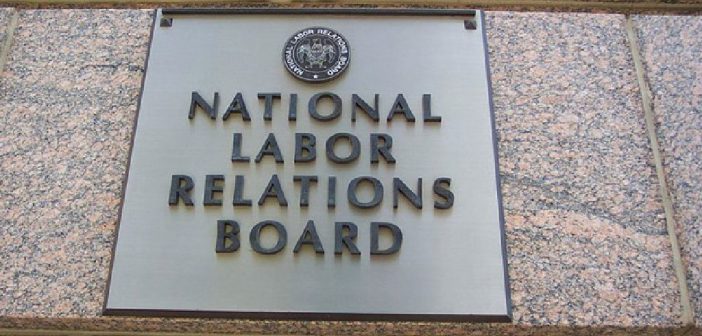By Chip Rogers, AAHOA President & CEO
One of the many negative legacies of the Obama-era National Labor Relations Board (NLRB), the unelected federal panel that oversees labor issues, is a decision that paved the way for micro-unions. Businesses of all sizes, but especially small companies, have been suffering the consequences of the ill-advised ruling. Worse, businesses are poised for more harm, not less, in the future if the decision is left to stand.
For decades, the precedent for organizing a union was that all workers in a class or craft had to be represented and, therefore, entitled to vote on the question of whether to unionize or not. In 2011, that was all undone by the NLRB decision.
In a case involving the Mobile, Alabama-based Specialty Healthcare and Rehabilitation Center, members of the NLRB found it prudent – or politically popular, more likely – to recognize for the first time that a bargaining unit could be just a fraction of a firm’s workforce.
Since 2011, the decision has been cited multiple times in subsequent rulings upholding illogical micro-unions, despite the attempts at the time by the board members to assure lawmakers and the public that the new precedent only applied to the healthcare industry. As lawyer David Pryzbylski noted for Lexology.com, the NLRB in 2016 approved a bargaining unit that consisted of janitors who worked at two different locations when, as he wrote, “Historically, the NLRB has disfavored allowing a union to include employees at multiple sites within the same bargaining unit.” They used the Specialty Healthcare decision to back up this new ruling.
That’s just the beginning of the problems with micro-unions. Jim Plunkett, the director of labor law policy for the U.S. Chamber of Commerce, told The Hill that the problem with the decision “is not the smallness of the unions, but the way the lines are gerrymandered within a workplace.”
“They’re allowed to cherry pick the employees in the workplace who they know will be supportive of the union,” Plunkett added.
Jay Perron, vice president of government affairs and public policy at the International Franchise Association, added, “If you have a hotel and all the maids organize, you could be bargaining with them, the people at the front desk and the bellhops” all separately.
Should a business eventually face multiple micro-unions, each would bargain independently for wages, benefits and working conditions. Each would have contracts of differing lengths and terms and possibly be represented by different negotiators. A concession to one might not be enough for another. And so on.
Fortunately, there are lawmakers who see the glaring error in the micro-union decision. Sen. Johnny Isakson (R, Ga.) and Rep. Francis Rooney (R, Fla.) have introduced simple legislation that would reverse the NLRB’s ruling and restore the previous standard into federal law. “Micro-unions are a mistake,” said Sen. Isakson when he introduced the Representation Fairness Restoration Act with Rooney.
Despite the glacially slow pace of Congress, that might actually be the easier and speedier route to undoing the decision. President Donald J. Trump recently nominated two new members of the NLRB, which will give the panel a 3-2 Republican majority pending their Senate confirmation. Trump has to wait until fall to fill the influential position of NLRB general counsel, who is not a board member, but greatly impacts the results of cases. The new members and counsel could eventually undo the damage, but that could take years of litigation.
We’ll urge both the passage of Isakson and Rooney’s Representation Fairness Restoration Act and the nomination of fair-minded individuals to the NLRB. Undoing the damage of the micro-union decision will take an all-of-the-above approach.
*This column has been updated from the original printed version to reflect to reflect the recent NLRB nominations.




